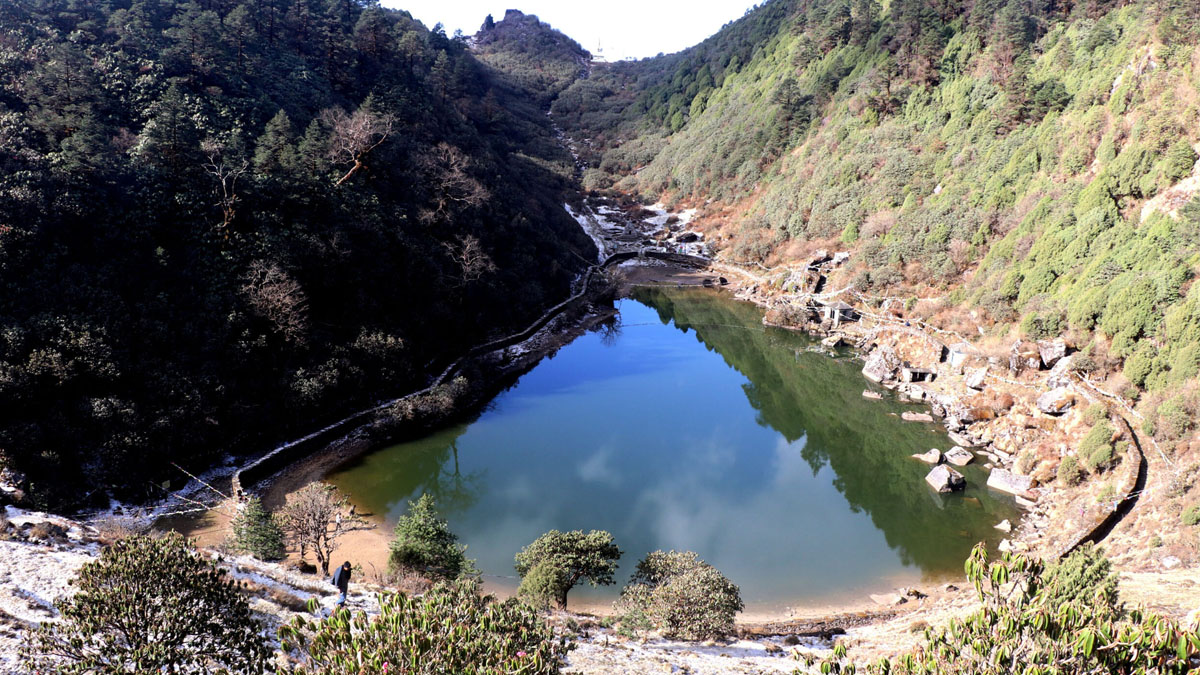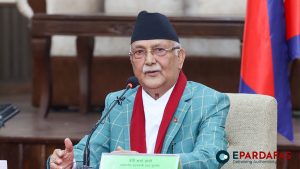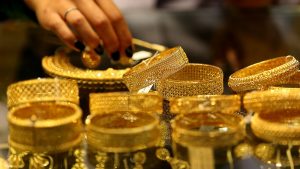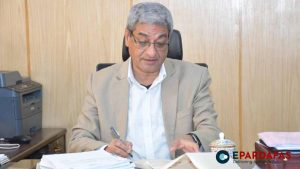
Exploring the natural beauty of Salpa Pokhari
Salpa Pokhari (pond) is a religious and touristic place filled with natural beauty. Situated in Salpasilichho Rural Municipality in Bhojpur district at a height of over 3,672 metres from sea level, the place is a confluence of Khotang, Solukhumbu, Bhojpur and Sankhuwasabha districts.
The famous religious site is reachable from Tumlingtar Airport in Sankhuwasabha through Kattike, Nepaledanda, Majhuwa, Kedakaule, Tanbutar, Chaukidanda and Dovane of Bhojpur. Another route to reach the place is from Bhojpur, the district headquarters of Bhojpur, through Suntale and Maiyung.
Bhedetar Hill, a beautiful tourist destination in the east, welcomes and makes people filled with joy and pleasure on the way to Salpa Pokhari. Going through the snaking road in the hill, down the Tamor river, heading along the river banks and reaching Dhankuta, the district headquarters of Dhankuta, another beautiful place, Hile, greets. It feels a matter of happiness when seeing greenery from the Pakhribas hill.
People feel pleasure in abundance when seeing the running Arun River through Tumlingtar. Vehicles are transported across the river by ferries without a bridge over the river. On both sides of the river is the Bhojpur district.
Salpa Pokhari is reachable by walking three days from Khanidanda Airport of Khotang district through Diktel, Talkharka, and Maiyung and from Lamidanda Airport through Nunthala, Mude, Rupakot and Sungdel.
One cannot forget travelling on a jeep on the dirt road through the Shadananda Municipality of Bhojpur and Kattike after crossing the suspension bridge over the Arun River.
Rudraksha (Elaeocarpus ganitrus) threes are seen in the fields and bare hills in the villages of the Bhojpur district. Rudraksha farming has become a main income source for the locals since some years ago. They have earned handsome money by selling Rudraksha seeds, it has been said. Rudraksha is revered as teardrops of the god Shiva. Rudraksha plants and seeds are used for chanting, wearing as beads and offering to gods and goddesses, and for medicinal purposes.
Aabal Brahmachari Shadananda Guru is believed to have for the first time planted Rudraksha trees.
The dZi Foundation, an international organisation working for uplifting the living standards of rural people through projects has launched awareness programmes about climate change and tourism development through the livelihood programmes for community infrastructure development in the area.
Programmes related to agriculture, gardening and entrepreneurship have been launched, and this has improved the living standards of the local people, said Sitaram Thapa Magar of the dZi Foundation.
Without being connected to the central transmission line, the villages are illuminated with solar power with solar panels fitted in the rooftops. Some women of Phedi village generate income by weaving clothes from Lokta trees and woollen rugs.
There lacks a market for the products, however, complained a local Asmita Rai.
Salpa Pokhari is reachable by walking uphill from Phedi village through stone steps and blooming flowers of various species. Walking around two and a half hours from Phedi village, captivating scenes around the villages are seen from Jaubari. Jaubari is a pocket area for barley and potato. Jaw-dropping scenes on the way uphill and lush forests of blooming rhododendron relieve the tiredness of people by providing joy. Cameras and mobile phones are kept ready to take pictures of ‘Chaurikharka’, an alpine meadow for grazing yaks and blooming rhododendron on the way.
Savouring Bhojpur’s local songs, and scenery on the way one meets Mabu where the Mundhum trail joins.
Salpasilichho Rural Municipality has come up with a plan to construct a secondary trail to link the Mundum trail, upgrade the Mundum trail and run a homestay facility around in collaboration with the dZi Foundation. The secondary trail leads to Salpa Pokhari through Chakheba, Maiyungdanda, Satdobato, Bagarebhanjyang, Jugedanda, and Lauredanda.
The around 88 km Mundum trail is being expanded with joint investments of the Swiss Government, Koshi State government, Temkemaiyung and Salpasilichho Rural Municipalities and Bhojpur and Shadananda Municipalities. Construction on the 62 km trail has been over, said the mayor of Bhojpur Municipality Kailash Ale.
The trail that lies on the border of Bhojpur and Khotang districts goes through Tawa Bhanjyang, Chakhewa Bhanjyang, Dhodre, Hans Pokhari, Tara Khasko, Balaute Bhanjyang, Lauri Bhanjyang, Nikas Mane, Silichung Danda (peak), Ekrate, Pakhuwa Bhanjyang, Baghkhor, Suntale and Baghkhor before concluding at Sampang Chowk of Bhojpur Municipality-10.
The trail, one of the famous trekking routes of the country and one of 100 new tourist destinations identified by the government links Kepilasgadhi and Sakela Rural Municipalities, the villages that have cultures and physical structures showing the civilisation of the Kirat community, said Ale.
It gives euphoric pleasure to see snowfall in the Silichung peak with morning sun rays landing in there. Beautiful scenes of mountains including Mount Everest and Mount Makalu, and flatlands of the Tarai are seen close from the peak that is situated on the border of Bhojpur and Sankhuwasabha districts at an elevation of 4,153 meters above sea level.
A plan is afoot to carry out a holistic development of the Silichung Danda and Salpa Pokhari, the religious and tourist site, said Daulat Gurung, chairperson of the Salpasilichho Rural Municipality. Despite the potential to attract tourists, Salpa Pokhari which sits in the lap of the Silichung Danda has taken a back seat due to lack of publicity, he said. The Silichung Danda has wildlife of various species including red panda and various valuable medicinal herbs.
Tourists and devotees visit Salpa Pokhari with the belief of getting one’s wishes coming true after dipping into the pond and worshipping there. Many pilgrims visit the area for sin mitigation as well. The Kirati people believe that the god lives in the pond. Worshipping at the pond grants knowledge, it is believed. There is a belief that dumb children can speak and infertility is cured by worshipping at the pond. Similarly, witch doctors go to the pond to acquire magical power.
Fairs are conducted at the pond on the full-moon days of Baisakh Purnima, Rishi Purnima, Kartik Purnima and Mangsir Purnima religious and cultural festivals. Kirat, Hindu and Buddhist pilgrims in particular from various parts of the country including Bhojpur, Khotang, Sankhuwasabha, Dhankuta and Solukhumbu visit the pond. The pond is a common pilgrimage site for the Kirat, Hindu and Buddhist followers. The area offers an opportunity to learn about the origin, civilisation, migration, and problems facing the Kirat community.













Comments